U.S. v Korematsu: An Account
by Douglas O. Linder (2019)
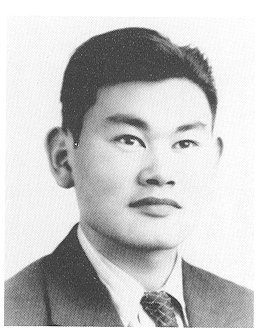
Fred Korematsu
In the 2018 case of Trump v Hawaii, the Supreme Court upheld the Trump Administration’s policy of banning most residents of seven countries from entering the US. The Court upheld the ban on a 5 to 4 vote, rejecting arguments that the ban was “anti-Muslim.” Curiously, Chief Justice John Roberts in his opinion for the Court, chose to say something about a case decided in the middle of World War II, Korematsu v. United States. The Chief Justice wrote, “Korematsu was gravely wrong the day it was decided, has been overruled in the court of history, and—to be clear—has no place in law under the Constitution.”
It seemed to be the one thing all nine of the justices could agree on. Korematsu was a terrible decision. So how did it happen?
Fred Korematsu’s father emigrated from Japan in 1904. He settled in San Francisco in 1905, the same year delegates met there to form the Asiatic Exclusion League. The press regularly warned about the growing “yellow peril.” Fred’s mother immigrated to the United States from Japan nine years later.
Fred was the third son, born in 1919. Fred was not his given name. An elementary school teacher found his real name to be unpronounceable and asked him one day, “How would you like to be called ‘Fred’?”
Fred’s family ran a flower nursery in East Oakland. They regularly attended samurai movies at the Buddhist temple, but the family converted to Christianity. Fred attended church every Sunday and became a member of a Boy Scout troop. Almost all of Fred’s friends were white; few Japanese-Americans lived close by.
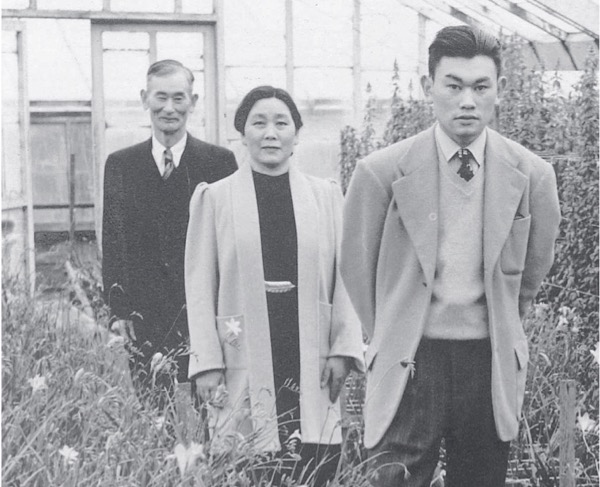
Fred and his parents in the family nursery in East Oakland, California
Fred was not the favored son. He helped at the nursery, but never liked the work. He got into more mischief than his brothers. Fred was shy and reserved, but he loved to dance to Big Band music. He liked competitive sports and participated on his high school tennis and swim teams.
Fred said, “in high school, I felt equal.” In public, he felt different. He had to go to Chinatown because none of the barbers near his home would cut his hair. Some restaurants would refuse to serve him.
Despite the discrimination, Fred was patriotic. In 1940, when Congress instituted its first peacetime draft, Fred registered on the first day. He was classified 4-F because of a gastric ulcer. He tried to volunteer for navy radio work, but wasn’t accepted. He got a job in a shipyard and was about to be promoted to foreman when we was expelled from the union because of his race. The same thing happened at his next job, at the Golden Gate Iron Works.
On the morning of December 7, 1941, Fred Korematsu was on a hillside in a car with his girlfriend listening to music on the car radio. The music was interrupted with a bulletin announcing the bombing of Pearl Harbor. Fred said he thought it “was a dream.” “It burned me up that this happened,” he said. He told his Italian-American girlfriend, “I better get back home.”
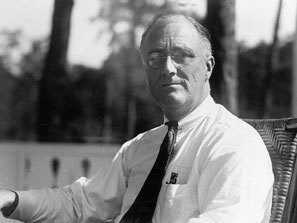
President Franklin Roosevelt in 1942
Within hours of the bombing, President Roosevelt declared all Japanese immigrants over the age of fourteen to be “enemy aliens.” The proclamation authorized the seizure of enemy aliens deemed to be dangerous and subjected the homes of Japanese-Americans to random searches. Police entered Korematsu’s home and confiscated flashlights, cameras, and anything else that they thought might be used for signaling. They trained a spotlight on the family nursery business and stationed a guard outside their house.
Before long, influential columnists were demanding that persons of Japanese ancestry be locked up. (Interestingly, almost no such calls were made to remove persons of either German or Italian ancestry.) Columnist Henry McLemore urged the government to “herd ’em up, pack ’em off, and give ’em the inside room in the Badlands. Let ’em be punched, hurt, hungry, and dead up against it.” Columnist Walter Lippmann said, without evidence, “the Pacific Coast is in imminent danger of a combined attack from within and without.”
While California’s Attorney General, Earl Warren, advocated for the expulsion of Japanese from his state, the two important figures in Washington remained unconvinced. Attorney General Francis Biddle told President Roosevelt that removal was “inadvisable.” And J. Edgar Hoover, no great civil libertarian he, wrote, “The necessity for mass evacuation is based primarily upon public and political pressure rather than factual data.”

General John DeWitt, head of the Western Command
The biggest push for removal in the military came from General John DeWitt, head of the Western Defense Command. In the end, it would be DeWitt who would oversee the removal process. DeWitt prepared what was called a report but what was essentially a brief arguing for removal. He sent it to the Secretary of War, Henry Stimson. In his report, DeWitt described persons of Japanese ancestry in America as “112,000 potential enemies … at large today … that are ready for concerted action.” In one of the most draw-dropping sentences of all time, DeWitt wrote, “The very fact that no sabotage has taken place to date is a disturbing and confirming indication that such action will be taken.”
On February 19, 1942, President Roosevelt signed an executive order authorizing the War Department to draft and enforce a removal order. The next month, General DeWitt issued a series of proclamations. Proclamation 1 created a “Military Area” that included the western halves of California, Oregon, and Washington, as well as the southern half of Arizona. All persons of Japanese ancestry, both citizens and non-citizens, were required to remove themselves from that area. “Voluntary evacuation,” as it was called, to inland states was one option. But for most, that was impracticable.
Proclamation 3 imposed an immediate curfew from 8 pm to 6 am for persons of Japanese ancestry and allowed them to travel only to and from work. Proclamation 4 imposed a “freeze order” prohibiting persons of Japanese ancestry from leaving the West Coast unless in a manner specified by the military.
The most consequential orders of DeWitt required persons of Japanese ancestry to report to so-called “assembly centers,” where they would be confined until permanent camps or relocation centers could be constructed at remote inland locations. Justice Owen Roberts, in his dissent in the Korematsu case, described “assembly center” as “a euphemism for a prison.”
General DeWitt’s exclusion order was posted on telephone poles all over the Military Area of the West Coast. Families had only days to make major decisions—what to be done with their business (if they had one), which possessions to take and which to give away, what should be done with their homes.
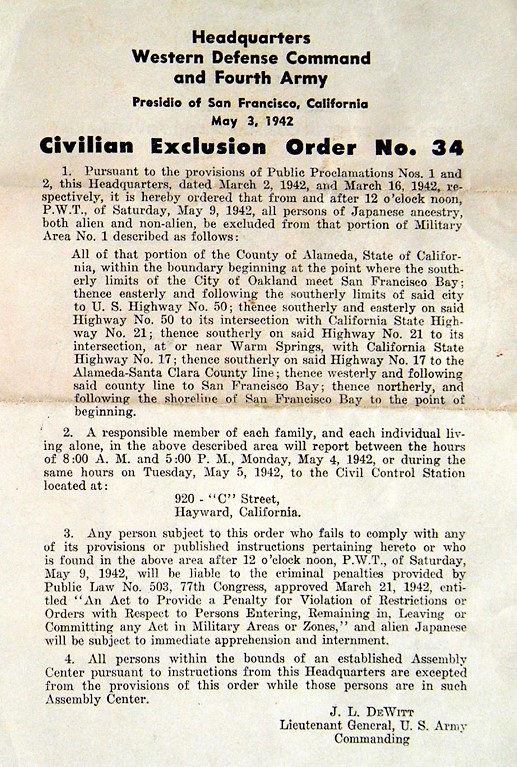
Exclusion Order 34, signed by Gen. De Witt (the order Korematsu was charged with violating)
The vast majority of Japanese-Americans followed the government’s orders. By cooperating, they hoped, they would be treated more humanely. Also, they’d prove themselves to be loyal Americans. It’s also likely that many feared they might be the victims of mob violence if they remained where they were.
Fred’s thoughts focused on his girlfriend, Ida Boitano. He was, after all, 21—and deeply in love. His first thought was to escape with Ida to Nevada, outside of the exclusion zone. But Ida wasn’t ready to move. She showed Fred an ad for a plastic surgeon in San Francisco. Perhaps surgery could change his Japanese features and he could pass as something else—Spanish-Hawaiian maybe? Fred changed the name on his draft card to Clyde Sarah because the name sounded like it might fit a person of that mixed ancestry.
Fred visited the plastic surgeon and told him he lived with an “American girl” and wanted to change his looks so he would not be subject to harassment. Fred paid $300 for the surgery. But it was a failure—he was instantly recognized by everyone he knew. He later called the decision to have surgery “a stupid thing.”
May 9, 1942 was the day on which all persons of Japanese ancestry were officially banned from Alameda County, where Fred lived. The rest of Fred’s family, as required, reported to their assembly center, a racetrack in San Bruno, California. They became family number 21538. The center was surrounded by barbed wire. Armed guards manned the entrance. Each entrant was searched, inoculated, fingerprinted, and interrogated. Then they were assigned to cramped barracks or stables.
Fred Korematsu ignored the order. He described the decision mainly as “a personal issue--I was so young.” But he knew the order was wrong. “I felt that I was an American citizen and I had as much rights as anyone else. I don’t even have any ties to Japan … I just thought it was unfair.” He said, “I was taught in high school you had equal rights. You believe in the Constitution … That’s what our soldiers die for, for freedom.”
After his family left for camp, Fred later recalled feeling “all alone.” Well, not quite all alone. He had Ida.
Fred’s freedom did not last long. Three weeks after the evacuation order went into effect, Fred and Ida walked down a street in San Leandro. An officer stopped Fred. Fred identified himself as “Clyde Sarah.” But he quickly admitted he was of Japanese ancestry and that the rest of his family was in camp. Fred was arrested and jailed.
The Trial
While being held at the Presidio stockade in San Francisco, Fred received a visit from a man he did not know. The visitor said his name was Ernest Besig, and that he was a representative of the ACLU. The ACLU had been looking for someone to challenge the exclusion order in court. With no luck. Potential litigants worried about making things more difficult for those in camps, or about appearing to be unpatriotic. And Besig warned Fred that even if he fought the order, the odds of winning were stacked against them. Courts tend to be deferential to decisions of the military in wartime. But Fred agreed to fight.
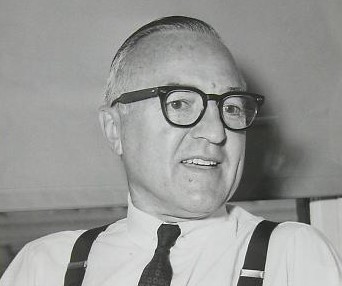
Ernest Besig, Korematsu's lawyer
Shortly after meeting with Besig, Fred was taken to the San Bruno assembly center and assigned to a horse stall. The stall had gaping holes that the wind and dust blew through. It had no heat or water. The only furnishings were a mattress and a single light bulb. According to Fred, “jail was a lot better than this.”
His father was not happy with Fred’s actions. “He gave me the dickens for getting involved in all this trouble,” Fred said. Family members and others worried that what he was doing was going to make it worse for everybody. Fred said later he understood their feelings: “Japanese people, they’re peaceful people and they like to leave things alone.” Because Fred had violated this cultural norm, he was largely shunned in camp.
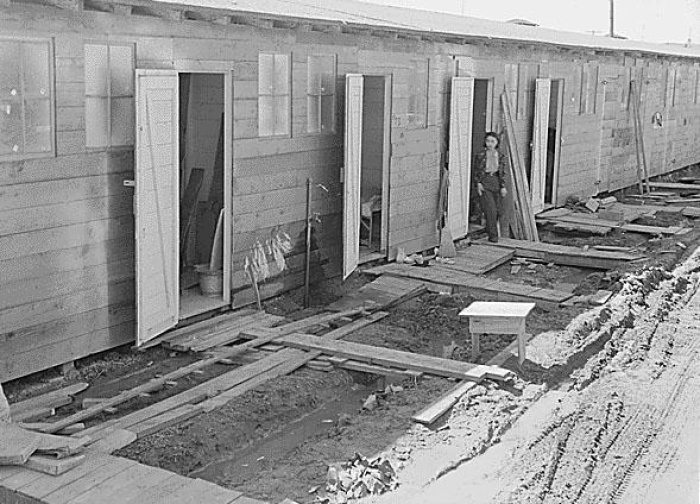
Barracks at the Tanforan Assembly Center
Fred was charged with the crime of “remaining in that portion of Military Area 1 covered by Civilian Exclusion Order number 34.” Bail was set initially set at $2500, then raised substantially when Besig attempted to pay it. It was clear that the government had no intention of letting Fred Korematsu go anywhere they didn’t want him to go. The case began receiving national attention.
ACLU lawyers filed a motion to dismiss the charges. They argued that the order was not a valid exercise of constitutional power. They also argued that it violated a whole laundry list of Fred’s constitutional rights: the right to be free from unconstitutional searches and seizure, the right to due process, the right to be free from cruel and unusual punishment, and the rights to freedom of movement and assembly. And they argued that the order violated Fred’s right to equal protection under the law.
The national ACLU was on board with raising the issue of Fred’s basic rights, but was not happy with the direct attack on the constitutional authority of the president, through the military, to issue the order. Not willing to fight for Fred with one hand tied behind their backs, the Northern California ACLU chapter freed itself from the national body and became independent.
The government defended the order as a reasonable response to a threat to national security. In its brief, the government described persons of Japanese ancestry as—quote- “this unassimilated group of blood relatives of a nation, with which the people of this country are now engaged in mortal combat.” Their continued presence on the West Coast, the brief argued, “gave ample opportunity for sabotage and fifth column activity.”
As the ACLU expected, its motion to dismiss the charges against Korematsu were rejected. Fred pled not guilty to the charges and the case was set for trial. The sole questions of facts for trial were whether Fred was a person of Japanese ancestry and whether he was within Military Area 1, the exclusion area.
The prosecution presented just one witness, an FBI special agent who interviewed Korematsu after his arrest. The agent testified that Fred admitted he was of Japanese ancestry and that he remained in the Bay Area after the exclusion order took effect. The agent also testified that Korematsu changed the name on his draft card and birth certificates, evidence that he knew he was in violation of the law.
Fred testified on his own behalf. He testified that he was a loyal American. He told the judge, “As a citizen of the United States I am ready, willing, and able to take up arms for this country.”
Judge Adolphus St. Sure found Korematsu guilty. He sentenced him to probation for 5 years. Which, of course, meant almost nothing. He was headed to an internment camp.
Appeals
By September, the military had completed inland relocation centers and began moving families there from the assembly centers. Fred and his family were shipped to Topaz, Utah, southwest of Salt Lake. It was a harsh, desert environment. But the Japanese Americans did what they could to make conditions more livable. They planted rock gardens, created craft areas, painted rooms, and built a functioning community. A seasonal leave policy allowed some of the incarcerated to work on nearby sugar beet farms during harvest time.
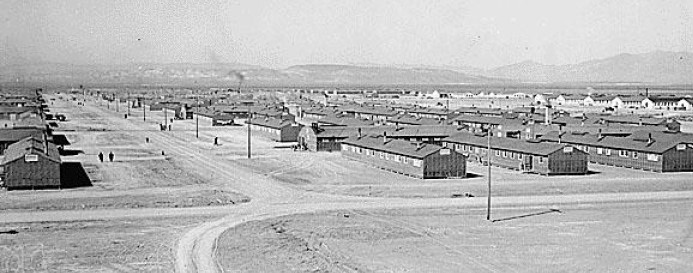
Relocation center in Topaz, Utah
When a temporary work release program was put in place, Fred jumped at the chance to escape camp life. After passing a background check, he was able to take a job at a concrete and pipe company in Salt Lake City.
The government, meanwhile, did what it could to make Korematsu’s appeal difficult. It filed a motion to dismiss his appeal on procedural grounds. A hearing on the motion was set before the Ninth Circuit Court of Appeals. Fred’s case was heard with that of two other Japanese-Americans also found to have violated exclusion orders, one from Oregon and another from Washington State.
Fred’s attorney argued that “there is no decision in history” that suggests the rights of citizens could be distinguished on the basis of their ancestry. The government argued the exclusion order was justified because the government had no way of distinguishing the loyal Japanese-Americans from the disloyal.
As Fred awaited news on the Ninth Circuit’s decision, he sent a letter to Besig. He asked, among other things, “How is it in San Francisco? I sure miss the ocean and the Golden Gate Bridge.”
The Ninth Circuit decided to punt the hard questions to the Supreme Court. Refusing to rule on constitutional questions itself, the court “certified” the issues to the US Supreme Court. In effect, the circuit court was saying to the Supreme Court, “These are some big issues we’d rather not decide if we don’t have to. Won’t you help us out here?” The Supreme Court declined the invitation and sent the case back to the Ninth Circuit for decision.
While his case went up and down, Fred dealt with uncertainty. In a letter to Besig, he complained, “Right now, I don’t even know what it feels like to have a home. I feel like an orphan or something.”
Meanwhile, the government began rethinking its decision to exclude all citizens of Japanese ancestry from the military. The War Relocation Authority asked each affected person to fill out a questionnaire. Among the questions asked were, “Are you willing to serve in the armed forces of the US on combat duty, wherever ordered?” and “Will you swear allegiance to the United States and … forswear any form of allegiance or obedience to the Japanese emperor?” Fred answered both of those questions with “Yes”—and then added an exclamation point for emphasis.
When the questionnaires were reviewed, 9% answered “no” to the question about their unqualified loyalty. But many of those were probably confused by the question, thinking that if they “foreswore” their allegiance to the emperor, that meant they had some loyalty to begin with. Nonetheless, most of those who answered “no” to the question were sent to a high security camp at Tule Lake, California. Of those who answered “yes” to both questions, over 33,000 men ended up serving segregated units in the military. And they served their country well. The irony is obvious.
In June 1943, Fred’s case was dealt a setback. The US Supreme Court, in a decision involving another challenge to war orders, upheld the curfew order. While the case was about the curfew and the curfew only, the decision confirmed that Fred faced an uphill battle in his challenge to the exclusion order. Six months later, the Ninth Circuit upheld the exclusion order in a decision that rested on the Supreme Court’s decision in the curfew case.
Fred’s lawyers filed a petition for certiorari with the Supreme Court, asking that they review the Ninth Circuit’s decision. To the surprise of many, the Court granted the petition. When told his case was heading to the Supreme Court, Fred was pleased. “Nice going,” he told Besig.
Fred’s appellate attorney, Wayne Collins, wanted to make the Korematsu case about what he described as “the whole outrageous program.” Not just the exclusion order, but the system that led to what Collins called “imprisonment without cause, without justification and without trial in defiance of the very letter and spirit of the Constitution.”
In his brief, he attacked General DeWitt’s report that the government relied on to support the exclusion and removal program. DeWitt claimed that persons of Japanese ancestry were “a large, unassimilated, tightly knit racial group” that was “bound to the enemy by strong ties of race and culture.” DeWitt called them “a menace” along our frontier “which had to be dealt with.” He suggested that some Japanese-Americans had been engaged in “illegal signaling” along the West Coast to potentially aid submarine attacks. Collins argued that DeWitt’s report was not evidence-based. It was all prejudice, stereotyping, and speculation.
While the date for oral argument in his case approached, Fred headed east. In January of 1944 he had been granted indefinite leave from the Topaz center, and in October 1944, he moved to the boom town of Detroit. He got a job with a company that made doors and called the people he met “quite friendly.”
On October 11, the nine justices of the Supreme Court took their seats to hear arguments in the case of Korematsu versus the United States. Solicitor General Charles Fahy argued that the truth of General DeWitt’s report on the dangers presented by persons of Japanese ancestry was not the issue. Only the question of DeWitt’s good faith and honest belief that they posed a danger. He also argued that the Court should focus only on the exclusion order and not address the issue of the constitutionality of detention and confinement.
Justice Wiley Rutledge questioned the policy of indefinite confinement. Fahy expressed “regret” at the time it took to sort the loyal from the disloyal detainees. But then he said, “It seems to me that those who have been injured, as many have, should be asked to view the situation along with the great injuries, losses, sufferings, and hardships of millions of our people in the fight of this nation for its life.”
The Supreme Court Decides: Korematsu v United States (1944)
The Supreme Court announced its decision on December 18, 1944. By a vote of 6 to 3, the Court upheld Fred Korematsu’s conviction. Justice Hugo Black wrote the majority opinion. He was joined by Chief Justice Stone, and Justices Rutledge, Stanley Reed, and William O. Douglas. Douglas would remain on the Court for another three decades and would develop a reputation as the Court’s greatest civil libertarian. But this day he voted for the government. And it would be a life-long regret.
Remarkably, even while upholding Korematsu’s conviction, the Court announced a new, tough test for laws that burdened suspect classifications such as racial groups. The Court said it would begin to apply “the most rigid scrutiny” to these laws. It would require that the government show a compelling reason for making the classification, and that there was no less burdensome way of achieving its objective. That’s a really tough test. One that has, for laws disadvantaging racial minorities, only been met once. And that in this case announcing the test.
In fact, the Court did not really apply the very test it said it was using. It accepted the government’s flimsy justification for the exclusion law. Justice Black wrote, “We cannot reject as unfounded the judgment of the military authorities and Congress that there were disloyal members of the population.” And then the Court offered as proof of the danger the suspect results of the loyalty questionnaire that was only given after the population was incarcerated.
The Court said it would save for another day the question of the constitutionality of the incarceration itself. What day? It was almost 1945 and there was no case in the pipeline. Yet the Court blithely said, “It will be time enough to decide the serious constitutional issue which petitioner seeks to raise…”
In summary, Justice Black wrote: “Korematsu was not excluded from the Military Area because of hostility to him or his race.”
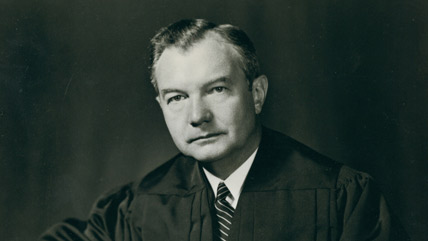
Dissenting Justice Robert Jackson: "Guilt is personal, and not inheritiable"
Justices Robert Jackson, Owen Roberts, and Frank Murphy dissented. Justice Jackson, who would soon take a leave from the Court to become the chief US prosecutor in the Nuremberg trials, wrote, “Guilt is personal and not inheritable.” Jackson warned that the Court’s decision would be “a far more subtle blow to liberty than the promulgation of the order itself.” It lies about, he wrote, “like a loaded weapon for the hand of any authority that can bring forth a plausible claim of urgent need.”
Justice Owen Roberts wrote, “This is a case of convicting a citizen of punishment for not submitting to imprisonment in a concentration camp, based on his ancestry.” He believed that in focusing solely on the question of exclusion the court had “shut its eyes to reality.”
Justice Murphy bluntly wrote that the “exclusion goes over the very brink of constitutional power and falls into the ugly abyss of racism.” He concluded that Korematsu’s right to equal protection, freedom of movement, and due process had all been violated. Justice Murphy called what had happened to Korematsu “one of the most sweeping and complete deprivations of constitutional rights in the history of this nation.” And all this, wrote Murphy, based on—quote- “largely an accumulation of half-truths and insinuations.” He found it significant that “not one person of Japanese ancestry was accused or convicted of espionage or sabotage after Pearl Harbor.”
Epilogue
Fred got word of the Court’s decision in Detroit. He later recalled, “I just couldn’t believe it. It just seemed like the bottom dropped out. I felt like, Am I an American or not?”
If there was any good news that day it came from another decision the Supreme Court announced. In the case of Ex Parte Endo, the Court ruled unanimously that it was unconstitutional for the government to detain a person of Japanese ancestry after they had made a specific determination that the person was a loyal citizen.
Oh, there was also good news the day before the Court’s decision in Korematsu. On that day, the Roosevelt Administration announced that it was revoking the exclusion orders. Persons of Japanese ancestry could, in good order, return to their West Coast homes. Some, fearing hostility or having no home to return to, stayed in camps until they were ordered out.
Fred remained in Detroit throughout 1945. He met Kathryn Pearson that year. She liked Fred. And he liked her. They married the next year and honeymooned at Niagara Falls.
In 1949, Fred and Kathryn moved back to the Bay Area. Because of Fred’s conviction, he was unable to find work with a large company or the government. He worked most of his career as a draftsman for small companies. The Korematsu’s had two children, a girl and a boy. Fred never told his children about his arrest and his big case before the Supreme Court. They learned about their father’s role in history in school.
In 1983, Federal District Judge Marilyn Patel found that the government, forty years earlier, had relied on “unsubstantiated facts, distortion, and the representations of a military officer whose views were seriously infected by racism.” She vacated Korematsu’s conviction. What she could not do, of course, was overrule the Supreme Court decision itself. Only the Supreme Court could do that.
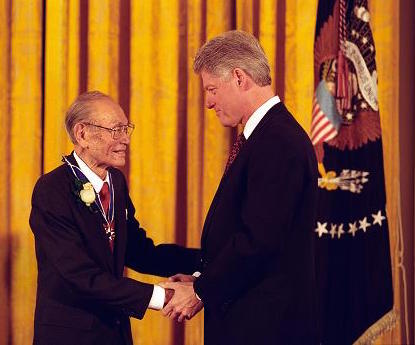
Korematsu receiving the Presidential Medal of Freedom from President Clinton in 1998.
Fred Korematsu might not have intended, in 1942, to fight for liberty. Mainly he just wanted to hang out with his girlfriend. But fight he did—in courts from coast to coast.
